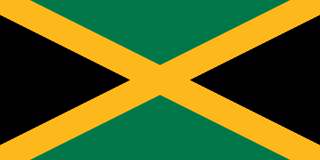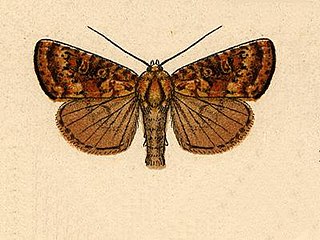| Amplicincia lathyi | |
|---|---|
| Scientific classification | |
| Kingdom: | |
| Phylum: | |
| Class: | |
| Order: | |
| Family: | |
| Subfamily: | |
| Tribe: | |
| Genus: | |
| Species: | A. lathyi |
| Binomial name | |
| Amplicincia lathyi Field, 1950 | |
Amplicincia lathyi is a moth of the subfamily Arctiinae. It was described by William D. Field in 1950. It is found in Jamaica. [1]

Moths are a polyphyletic group of insects that includes all members of the order Lepidoptera that are not butterflies, with moths making up the vast majority of the order. There are thought to be approximately 160,000 species of moth, many of which have yet to be described. Most species of moth are nocturnal, but there are also crepuscular and diurnal species.

The Arctiinae are a large and diverse subfamily of moths, with around 11,000 species found all over the world, including 6,000 neotropical species. This group includes the groups commonly known as tiger moths, which usually have bright colours, footmen, which are usually much drabber, lichen moths, and wasp moths. Many species have "hairy" caterpillars that are popularly known as woolly bears or woolly worms. The scientific name of this subfamily refers to this hairiness. Some species within the Arctiinae have the word “tussock” in their common name due to people misidentifying them as members of the Lymantriinae based on the characteristics of the larvae.

Jamaica is an island country situated in the Caribbean Sea. Spanning 10,990 square kilometres (4,240 sq mi) in area, it is the third-largest island of the Greater Antilles and the Caribbean. Jamaica lies about 145 kilometres (90 mi) south of Cuba, and 191 kilometres (119 mi) west of Hispaniola ; the British Overseas Territory of the Cayman Islands lies some 215 kilometres (134 mi) to the north-west.
The species can be distinguished from other Amplicincia species by the three transverse yellow bands on the upperside of the forewing.
Amplicincia is a genus of moths in the subfamily Arctiinae described by William D. Field in 1950.





